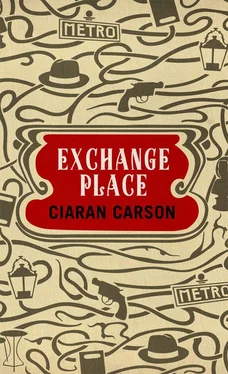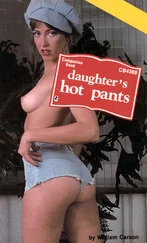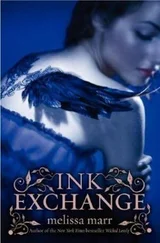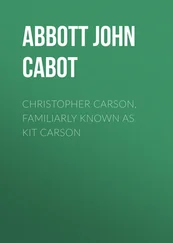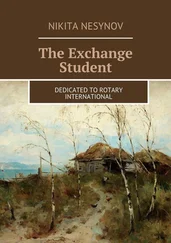I am sitting under one of the mirrors writing this in the A6 Muji notebook, referring sometimes to the A5 notebook, and from time to time I look up from my writing. I take off my hat, and see the man in the mirror simultaneously take off his hat. I hold up the pen in my right hand, and the Other in the mirror holds up an identical pen in his left hand. I take a sip of whiskey, and the Other does likewise with the other hand, we are countless men, our images forever receding and approaching in an infinite recession and progression. I am writing this with a Japanese Sailor Professional Gear pen with a Fine nib which corresponds to a European Extra Fine, about 0.5mm, and I think Walter Benjamin would have liked the Sailor Extra Fine nib, which draws, I would guess, an 0.25mm line — Benjamin whose famously miniscule hand could fit some hundreds of words on to a single sheet of hotel notepaper — Benjamin to whom the finest available nib was too broad, whereupon he would turn the pen around and use the back of the nib instead. I think of his notebooks in different formats and dimensions, crammed with writing — describing, annotating, cataloguing, speculating. I think of a sheet of buff paper found in his archive, headed with the emblem of Acqua Pellegrino, a blue-grey bottle against a red five-pointed star, on which he has written, or rather, this is an English translation of what he wrote: ‘What is Aura? The experience of an aura rests on the transposition of a form of reaction normal in human society to the relationship of nature to people. The one who is seen or believes himself to be seen (glances up) answers with a glance … When a person, an animal, or something inanimate returns our glance with its own, we are drawn initially into the distance; its glance is its dreaming … Aura is the appearance of a distance however close it may be. Words themselves have an aura … As much aura in the world as there is still dream in it.’
Above these words, to the right of the San Pellegrino star, Benjamin has written three lines at an upwards diagonal slant. In English, they make up eighteen syllables. A haiku, more or less? Knowing little German, unable in any case to decipher the tiny writing, I do not know if they are an accurate reflection of the original.
Eyes staring at one’s backMeeting of glancesGlance up, answering a glance
Kilpatrick exited Passage des Panoramas into Rue Vivienne. Here, as in Passage des Panoramas, were stamp shops and coin shops, and he thought again of Walter Benjamin’s obsessive collecting — of stamps, picture postcards, books, children’s toys, among other things. Kilpatrick himself had been a stamp-collector — philatelist, rather — in his teens, and intended to devote a section of his Paris book to those many shops which catered for collectors of whatever hue. He had transcribed into his notebook a passage entitled ‘Stamp Shop’, from Benjamin’s One-Way Street , a text which Benjamin termed a notebook:
‘There are collectors who concern themselves only with postmarked stamps … The pursuer of postmarks must, like a detective, possess information on the most notorious post offices, like an archaeologist the art of reconstructing the torsos of the most foreign place-names, and like a cabbalist an inventory of dates for an entire century … Stamp albums are magical reference books; the numbers of monarchs and palaces, of animals and allegories and states, are recorded in them. Postal traffic depends on their harmony as the motion of the planets depends on the harmony of the celestial numbers … Stamps bristle with tiny numbers, minute letters, diminutive leaves and eyes. They are graphic cellular tissue.’
Kilpatrick walked along Rue Vivienne in a reverie, stopping here and there to look into a shop window. He saw himself at the age of fourteen or fifteen with a jeweller’s loupe screwed into his eye-socket, scrutinizing a stamp. He would compare its characteristics to the description in the philatelists’ bible, the Stanley Gibbons catalogue. He would mount it in his loose-leaf stamp album along with others of the set; underneath, in a calligraphic round-hand written with an Osmiroid italic pen, he would transcribe the relevant catalogue details. Like all collectors, he had begun with generalities, collecting everything and anything — the stamps of the world, in this instance. As he learned more he began to realise how much there was to learn. He bought books about stamps and borrowed books about stamps from the Belfast Central Library. He subscribed to philatelic journals. He learned to make ever finer discriminations, focusing on the stamps of the British Commonwealth, Great Britain and Ireland before specializing in those of Ireland and those of Victorian Britain.
Victorian stamps were ostensibly modest in appearance but bore a wealth of graphic detail. To the untrained eye, one Penny Red looked much like another, but they existed in hundreds of variations of ink colour, paper, perforations, die, plate numbers, type fonts, watermarks — shades of meaning that constituted a potentially vast field of study, not to speak of the abiding interest of postmarks, each recording a date, a place, the instant when a stamp became a used stamp. Some collectors specialized in stamps on covers, noting place of origin and destination in the context of the railway network of Victorian Britain. It was detective work, and, like Sherlock Holmes, these philatelists had frequent recourse to Bradshaw’s railway guide. Kilpatrick was pleased to learn that in 1820 George Bradshaw, originator of the guide, had set up an engraver’s shop in Crown Entry in Belfast, before moving to Manchester two years later.
Kilpatrick had visited Manchester in December 1968 at the invitation of Danny Fisher, an old school friend who now worked as a library assistant in the Manchester City Library. It was Kilpatrick’s first time away from Ireland, and Manchester struck him as a Belfast constructed on a larger scale, with massive brick-built office blocks, hotels, derelict warehouses and factories some six or eight stories high, cavernous streets and black canals running between the buildings. It was three o’clock when he arrived at the centre, and dusk was already falling. As he walked down a sombre street, huge flocks of starlings wheeled above the glittering slate roofs, thousands of birds twisting, turning, swooping in perfect unison as if orchestrated by telepathy, and Kilpatrick imagined himself conducting them as he would an aerial symphony, waving his arms to synchronize their movements. He was unsure of his whereabouts. Many of the houses in the street were boarded up, and he was glad to come to the yellow light of a shop window where he got directions. He still remembered Fisher’s address: 27 Bloom Street. He had not been in touch with him for years.
As Kilpatrick turned a corner he bumped into a passer-by. He muttered an apology and glanced up at the blue and white street sign: Rue Daguerre. He was far from Rue Vivienne. Lost in the past, he had no memory of how he had got there. He went into a bar café. It was still morning. The bar was empty. He ordered a coffee. The sound system was playing Kind of Blue . He lifted the cup to his lips. The track came to an end. There was a lull before the next track. He recognized it immediately: Glenn Gould’s playing of Contrapunctus XIV . As he listened, he became aware of a hum in the background. A woman was vacuuming, the sound growing louder as she approached his table, drowning out the music. As if oblivious to his presence, head lowered, intent on her task, she vacuumed around his feet before retreating into the darkness at the back of the bar. The music was still playing, and he recalled Glenn Gould’s anecdote of how, in his teens, he was learning Mozart’s Fugue in C Major when the housekeeper came in and began to vacuum round the piano; on purpose, according to Gould. Gould couldn’t quite hear himself, he said, but began to feel what he was doing, the tactile presence of the fugue as represented by finger positions, and also by the kind of sound you might hear if you stood in the shower and shook your head with water coming out of both ears. It was luminous, said Gould, the most glorious sound. It took off. He claimed that all of the things Mozart couldn’t quite do, he was doing for him. And he suddenly realized that the particular screen through which he was viewing this, which he had erected between Mozart and his fugue, was exactly what he needed. As he came to understand later, said Gould, a certain mechanical process needed to come between himself and the work of art he was involved with. It was one of the great moments of his life.
Читать дальше
